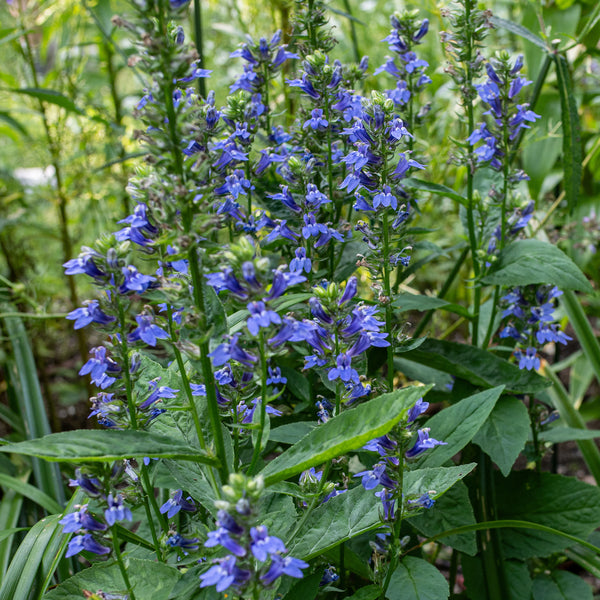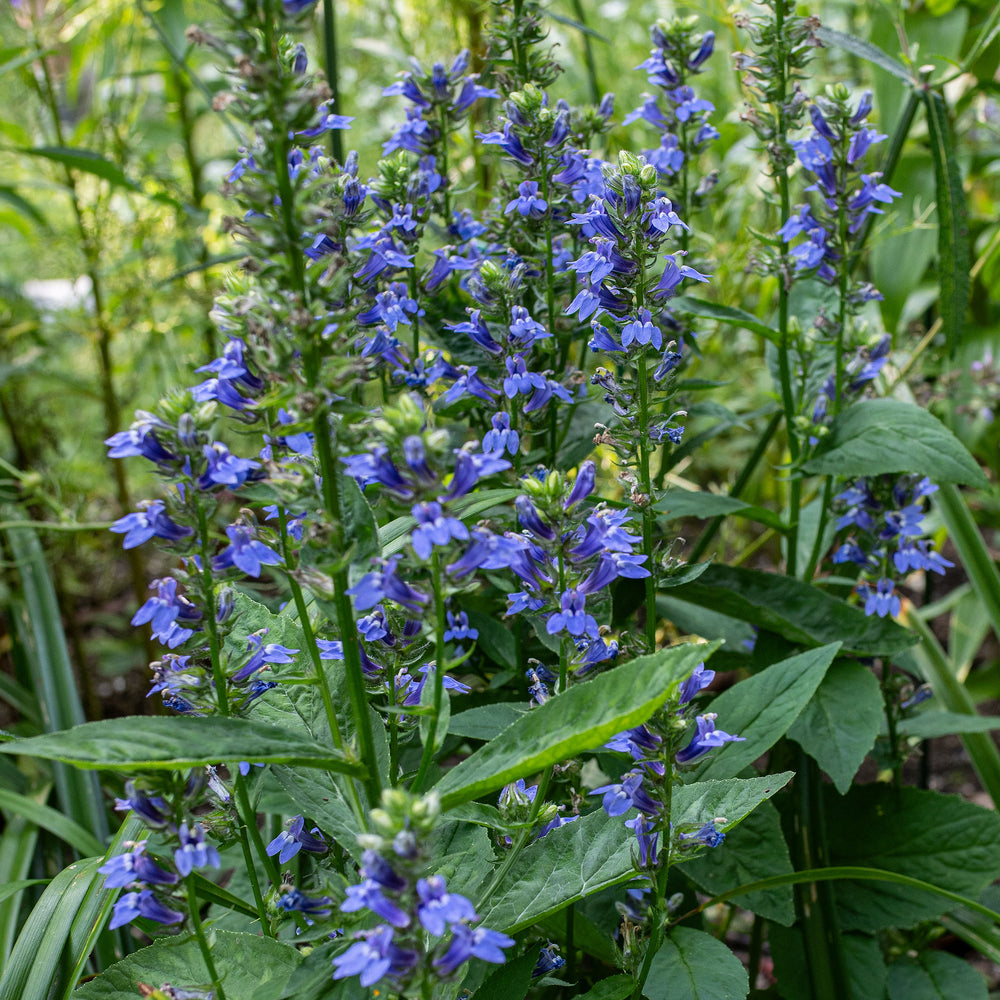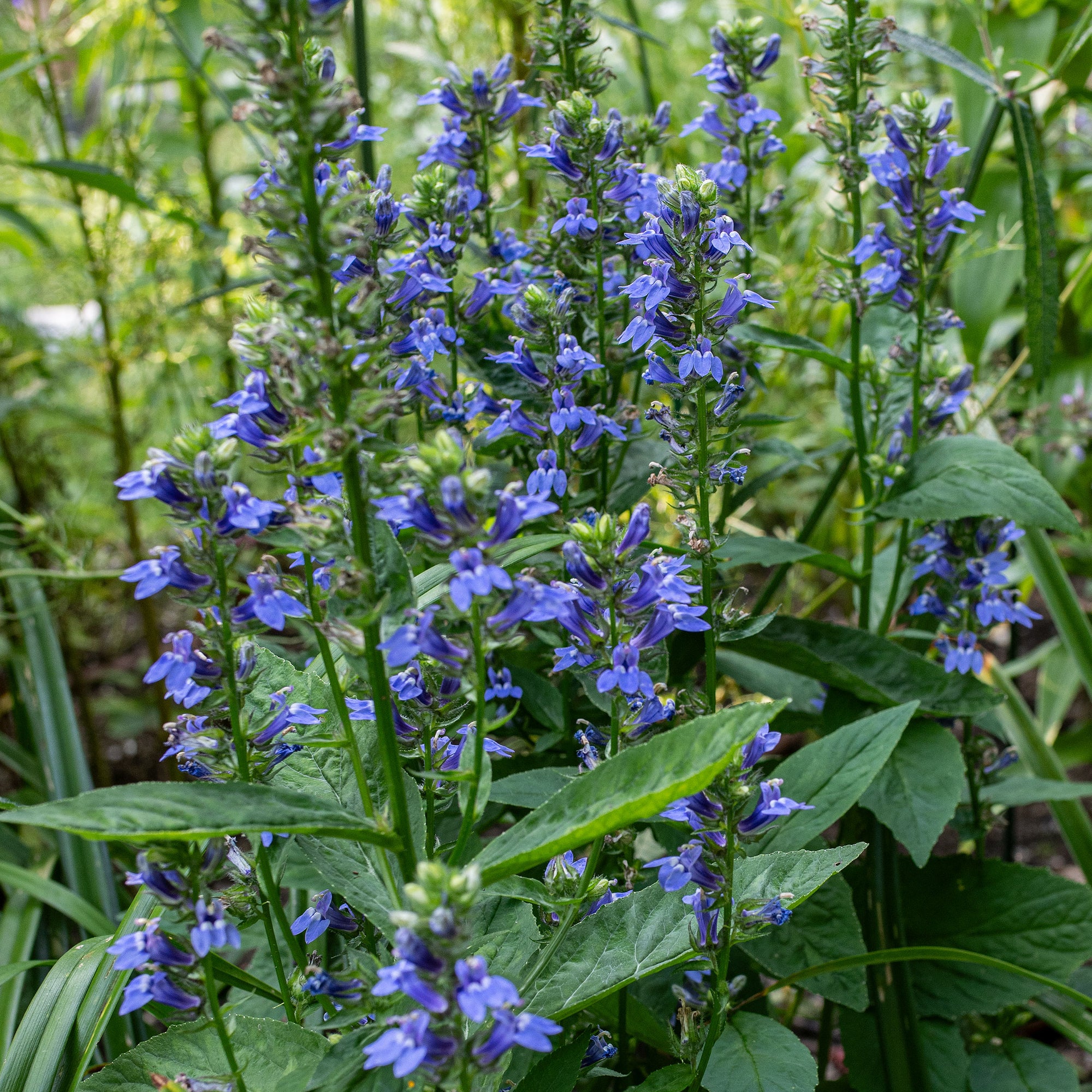Seed Packet
Lobelia - Great Blue
Lobelia siphilitica
Native to eastern areas, blue lobelia was named by Linnaeus, who had heard of its use by Native Americans to cure venereal disease. While false, the name stuck; however, it was used medicinally for colds and stomach troubles by Native people and colonists alike. The flowers cover the stout stems with bloom for over a month in late summer in moist soils. Lobelia attracts a wide array of beneficial insects and is one of the best choices for bumblebees.
SKU #S1276


































